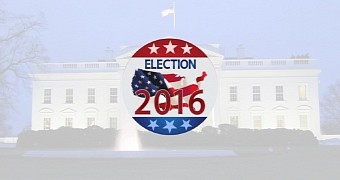The 2016 US Presidential Elections are about to flood your news feed next year if they haven't already done so this year during the candidates selection process.
A recent study put together by two researchers from the Brennan Center for Justice highlights the perils of using old, outdated technology during next year's elections.
Besides the problem of longer voting lines that might arise from failures and crashes, the report also highlights that votes can also be lost or tallied for the wrong candidate.
Their research is based on 10 months of investigations and interviews with more than 100 election officials and specialists in all 50 US states.
Nobody uses a 10-year-old laptop at home, so why would US voting officials use one instead?
According to the researchers, the biggest issue affecting the US national voting system is the use of old technology. Because most voting machines had been purchased over 10 years ago, and many had been designed as early as the ‘90s, most of them are prone to crashes and failures.
Additionally, unlike older voting machines that were designed to be used for decades, modern software and hardware get morally outdated after a few years as technology evolves.
"The expected lifespan for the core components of electronic voting machines is between 10 and 20 years, and for most systems it is probably closer to 10 than 20," say the researchers.
In 43 US states, local officials are equipped with electronic voting and counting machines that will be at least 10 years old in 2016. In 14 of these states, machines will be at least 15 years old when the next presidential elections take place.
Some of these machines are so old that they are not even manufactured anymore, and if one breaks down, it will be hard to find replacement parts.
Voting machines are prone to hacking attacks
Even worse, the study also revealed particular cases where voting machines could be abused to alter final tallies. For example, some officials mentioned problems with touchscreen-based voting systems that, despite the voter pressing a candidate's name, the vote was recorded for someone else.
Another example is the state of Virginia, where 24% of voting precincts used an electronic voting system that allowed attackers to hijack it via its wireless feature and change voting data.
This type of problems raise an alarm with US government officials, but few take action, mainly because of the high investment costs to their local budgets.
31 of the 50 state officials questioned in the study said they were willing to purchase new voting rigs, but 22 also said they still did not know where they would be able to get the money from for such endeavor.
Next year's presidential elections may be a balancing act between old technology and security concerns, which may also delay or accelerate the implementation of online voting systems like the one used in Estonia since 2005.
You can read Lawrence Norden and Christopher Famighetti's America’s Voting Machines at Risk report below, or download your own version from the Brennan Center for Justice at the New York University School of Law.

 14 DAY TRIAL //
14 DAY TRIAL //